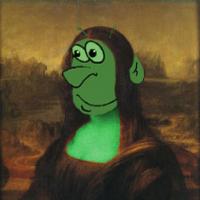Critique, please.
از orthohawk, 2 مهٔ 2015
پستها: 6
زبان: English
orthohawk (نمایش مشخصات) 2 مهٔ 2015، 3:07:09
 to people who contact me about learning Esperanto who may wish to do so in a more traditional (i.e classroom) setting. Here's my handout on pronunciation:
to people who contact me about learning Esperanto who may wish to do so in a more traditional (i.e classroom) setting. Here's my handout on pronunciation:1. Let's start with the vowels.
The vowels in Esperanto alphabet are the same as in other Latin-alphabet languages: a, e, i, o, u. Their pronunciation is as in the English words (as pronounced in midwestern American), fAther, fEd, machIne, fOr, and rUde. They are "pure" vowels, i.e. the speech organs do not change position during the pronunciation.
2. The consonants that are pronounced very close* to their English counterparts are: b, d, f, h, k, m, n, p, t, v, z as in bad, doll, find, hat, kaput, mad, nothing, pad, tell, vole, zero.
3. The following consonants have pronunciations that the English counterparts have only part time: g (always like the hard "g" in "get" ), l (always the "light l" as in "light" rather than the "dark l" like in "fall" ), s is always like the s in "say".
4. Three consonants in Esperanto are pronounced in such ways that while present in English are not spelled the same: c (like the "ts" in "cats" even at the beginning of a word), j (like the English "y" in "yes), and r. The R is what is called an "alveolar tap." Most Americans produce the same sound when they say the two d's in "ladder" in a free flowing conversation, or the two t's in "butter." An alternate pronunciation is a tongue trill, like the Scots do.
5. Five of the consonants in Esperanto (c, g, h, j, and s) can take a circumflex accent mark (^) to indicate a different pronunciation, namely: the "ch" in "church", the "j" in "judge", the German or Scottish "ch" in "bach" or "loch", the "s" in the English word "measure" and the "sh" in "ship".
6. There are five more sounds (or more precisely sound combinations) in Esperanto: aj (sounds like the long "i" in "night" ), "ej" (sounds like the English long "a" in "play" ), oj (sounds like the "oy" in "boy" ), aŭ (sounds like "ou" in "out" ) and eŭ (sounds like "eh" and "oo" run together in one syllable),
7. And finally, the accent or stress on a word always falls on the next to the last vowel. Most of the time this is no problem, but we must be careful of words ending in -io and -ia. The accent is on the "i", not the syllable before. E.g. "nenio" ("nothing" ) is stressed on the "i" not the "e": ne-NI-o, and not NE-ni-o. Similarly, "familio" is fa-mi-LI-o and not fa-MI-li-o.
Note: EVERY letter in Esperanto is pronounced: For example, "knabo" is pronounced with the "k" sounded. Be careful not to add a vowel sound between the "k" and the "n": kna-bo, and not "kuh-ha-bo." It may be difficult to do at first, but with practice it becomes second nature. Compare: kvar (kvar, not kuh-var), kvin (kvin, not kuh-vin), etc.
(to be continued)
KStef (نمایش مشخصات) 2 مهٔ 2015، 14:30:39
Rest is (in my opinion) correct.
Best wishes and sorry for mistakes.
Tempodivalse (نمایش مشخصات) 2 مهٔ 2015، 15:11:21
Hx is always the hardest letter to explain - I was never quite satisfied with the near-universal "Scottish Loch" example, but I can't think of anything better, since this sound is quite foreign to English.
Miland (نمایش مشخصات) 2 مهٔ 2015، 17:56:01
orthohawk (نمایش مشخصات) 2 مهٔ 2015، 20:30:19
KStef:Hi. I am not sure, becouse I am not English native-speaker but I think the better way to introduce c letter is z in German. For example Zebra (Cebra) or Pizza (Pica). C letter is similar to ts but c is shorter. Let's try in TTS listening English cats, Polish kac and see.Thy comments are appreciated; however, my handouts are written mainly with English-speaking monoglots in mind, who would probably not know a German Z from a smack in the face.
Rest is (in my opinion) correct.
Best wishes and sorry for mistakes.
 I tried keeping with the "same" sounds in spellings they would likely come across in their own reading.
I tried keeping with the "same" sounds in spellings they would likely come across in their own reading. Christa627 (نمایش مشخصات) 5 مهٔ 2015، 23:06:47
Tempodivalse:Hx is always the hardest letter to explain - I was never quite satisfied with the near-universal "Scottish Loch" example, but I can't think of anything better, since this sound is quite foreign to English.David Jordan, in "Being Colloquial in Esperanto", explains it as the ch in "blech!"
I didn't see any mention of "uj" in your paper, which is for me one of the most difficult sounds.

